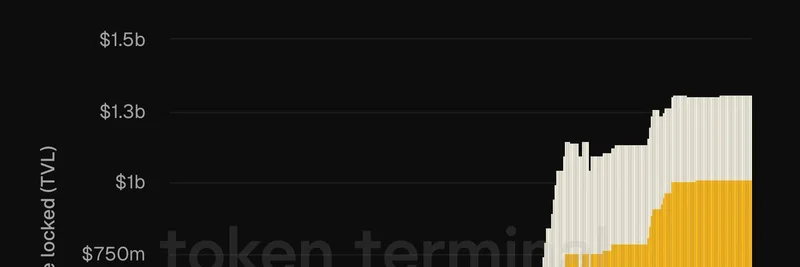In a recent thread on X, Lumida Wealth Management dives into the ongoing debate between Ethereum and Solana, highlighting Ethereum's strengths as an asset while pointing out its challenges in maintaining focus. Posted by @LumidaWealth, the discussion draws from a podcast episode on Bits + Bips featuring experts like Ram Ahluwalia, Campbell Austin, and Christopher Perkins. It's a timely look at how these blockchains are evolving, especially relevant for meme token enthusiasts tracking where the next big opportunities might emerge.
Ethereum's Core Strength Meets a Focus Challenge
Ethereum has built an impressive infrastructure, but as the thread notes, it sometimes feels like it's getting lost in academic pursuits—like endless merges and purges on its roadmap. In contrast, Solana has honed in on creating "internet capital markets," essentially building a business around fast, efficient transactions that appeal to traders and developers alike.
For those new to this, Ethereum is like the grand old library of blockchain: vast, secure, and full of decentralized apps (dApps). Solana, on the other hand, is the sleek startup office—quick, cost-effective, and laser-focused on scalability. This difference matters for meme coins because Solana's low fees and high speed have made it a hotspot for viral tokens, while Ethereum's layer-2 solutions are still catching up to make meme trading more accessible.
The thread emphasizes that Ethereum remains a "good relative strength" as an asset, meaning it holds up well compared to others in the market. But without clearer leadership and direction, it risks losing ground to more agile competitors.
The Future of Stablecoins: Categories Over Dominance
Shifting gears, the conversation touches on stablecoins—those crypto dollars pegged to real-world assets like the U.S. dollar. The experts predict that by 2040, the top stablecoin might not even exist yet. Instead, we'll see categories: retail payment rails, T-bill backed ones, and yield-bearing treasuries.
Why does this matter for meme tokens? Stablecoins are the on-ramps for trading memes. If they're easily swappable, expect a explosion of options; if not, one might dominate. Europe's MiCA regulations could ironically push toward a winner-take-all scenario, likely favoring U.S.-backed stables. For meme traders, this means smoother integrations on chains like Solana or Ethereum could drive more liquidity into fun, community-driven tokens.
Lessons from Crypto's 2008 Replay
The thread draws parallels to the 2008 financial crisis, noting recent glitches like Binance's frozen price feeds and Tether's wobbles. When collateral and pricing fail, leverage can wipe out positions fast. The call is for better oracles (data providers) and valuation processes to prevent these meltdowns.
In the meme world, this is crucial. Meme coins thrive on hype and volatility, but without robust infrastructure, flash crashes can kill the fun. Think of it as building guardrails for the rollercoaster—essential for sustaining long-term interest.
Perps Need to Mature: From Liquidations to Risk Management
Crypto perpetual futures (perps) get a reality check too. Unlike traditional finance's central clearing parties (CCPs) with layered defenses, crypto perps often lack margin discipline and redundancy. The result? Forced liquidations instead of smart risk handling.
For meme token ecosystems, mature perps could mean safer leveraged bets on your favorite dog-themed coin, potentially attracting more institutional players and stabilizing prices.
DeFi vs CeFi: Competition Over Regulation
DeFi (decentralized finance) opens new paths, but centralized finance (CeFi) still wins on trust and service. The advice? Don't regulate giants like Binance out; outcompete them.
This resonates in meme land, where CeFi exchanges often list hot tokens first, but DeFi pools on Uniswap or Raydium offer direct access. Healthy rivalry could lead to better tools for launching and trading memes without gatekeepers.
Meme Coins Outpace Traditional IPOs
Here's the standout stat for our readers: In 2024, meme coins raised a whopping $140 billion in global liquidity, dwarfing the $30 billion from U.S. IPOs. The reason? Zero friction—no hefty fees, no gatekeepers, just direct listings.
This highlights blockchain's power for capital formation. Meme tokens, often dismissed as jokes, are proving to be efficient fundraising machines. On Solana, where many memes explode due to cheap transactions, this trend is accelerating. Ethereum, with its established DeFi scene, could catch up if it streamlines its focus.
Imagine a world where launching a meme project is as easy as posting a tweet. That's the exponential growth the thread hints at, and it's why platforms like Solana are becoming meme havens.
Wrapping Up: Direction Defines the Winners
As Lumida wraps up, Ethereum's tech is top-notch, but its next hurdle is sharp leadership. Solana's business-minded approach gives it an edge, especially in fast-paced areas like meme tokens.
For blockchain practitioners and meme insiders, this thread is a reminder to watch where liquidity flows. Whether you're building on ETH or SOL, focus and execution will separate the infrastructure builders from the business empires.
Check out the full thread on X or subscribe to Lumida's YouTube channel for more insights. What's your take—ETH loyalist or SOL speed demon?


